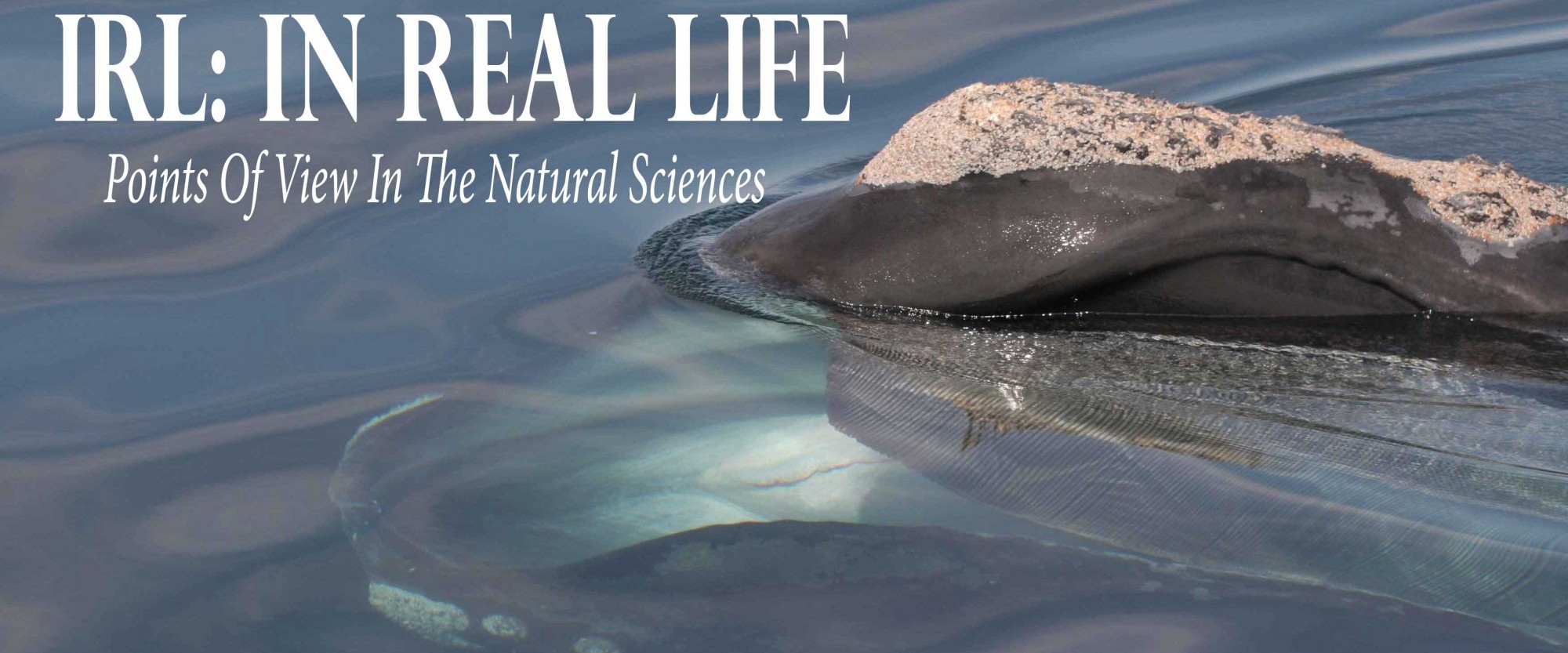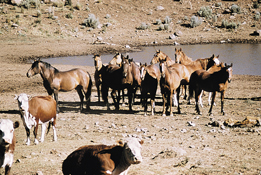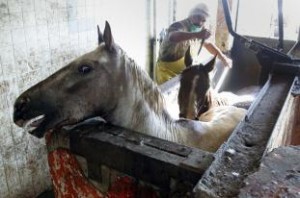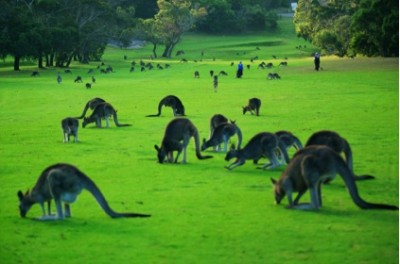by Serena Sutka and Maureen Gallant
To Infinity and Beyond
People are fascinated with the idea of creating clones, and countless fiction books and movies have been made on this theme. With current advances in biotechnology, yesterday’s science fiction is starting to look a lot like today’s reality. Alongside these advances come just as many drawbacks, and many of the procedures bring up ethical questions that leave us wondering if advancing is actually possible.
In the Beginning
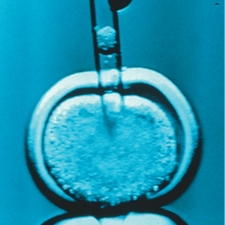
A cell is inserted into an egg that has had its nucleus removed. (Courtesy of Photo Researchers, Inc.)
According to Stice (a Veterinary and Animal Science researcher from the University of Massachusetts Amherst) et al (1998), when Dolly was introduced to the public, many opposed her creation because of their perception of the power and capabilities of cloning (p. 1). As McKinnell and Di Bernardino pointed out, once Dolly appeared, the media jumped on the topic and immediately leaped to and then became obsessed with the idea of cloning humans (McKinnell and Di Bernardino, 1999).
Human Cloning
Is this jump from the cloning of animals to the cloning of humans valid? Motavalli (1999), writer for The Environmental Magazine, in “Me and My Shadow,” states that “few scientists doubt that human cloning is possible” (para. 5). However, whether or not it’s possible may not be the question at hand.
When interviewing Nancy Kieser (2010), a professor in the Animal Science department at the University of Massachusetts Amherst who spent a good deal of time working with a company that was cloning cattle, we asked her if she felt that animal cloning would lead to human cloning. She felt it to be impossible and explained that there is a limiting factor in terms of donors and recipients. This problem does not exist in animal cloning because there are plenty of eggs available from slaughterhouses that would go to waste if not used (personnel communication).
Kieser (2010) pointed out that as far as humans go, there is already a high demand for surrogate mothers so it will be hard to find people who will agree to be a recipient for a cloned baby. Not only that, but out of 250 embryos only 10% will survive long enough to reach the blastocyst stage, which introduces other limitations as the fetus develops. In addition, the public will never really be accepting of the idea because as Nancy points out, “At the end of the day it’s still going to be a human that’s born. It’s going to think, it’s going to have emotions” (personal communication). It is for these reasons that she believes it is not going to catch on.
Only the Good Die Young
In addition to the concerns regarding human cloning, there are also questions about whether the process by which Dolly was cloned results in a shortened lifespan. According to AnimalResearch.info (1996), most sheep live to be ten to twelve years old, and when Dolly died at the age of six and a half years, she suffered not only from arthritis but also from sheep pulmonary adenamatosis. This is a virus infected lung tumor that is typically found in older sheep (para. 7). According to Kimball (2010), a study showed that Dolly’s telomeres were only 80% as long as those of a normal sheep her age. Telomeres are located at the end of chromosomes and keep the ends of various chromosomes in the cell from bumping into each other. This is crucial to determining cells’ lifespans. The telomeres shrink throughout the life of an organism, giving cells a finite lifespan (p. 1).
Because of what happened with Dolly, studies were done to see if the process of nuclear transfer resulted in animals with shorter telomeres. Lanza et al (2000), who wrote an article about the studies conducted on telomeres, explains that the studies also tried to determine if nuclear transfer would be able to reverse cellular aging and restore somatic cells to a phenotypically youthful state (p. 665). The results of the study showed that their cloned animals actually had extended telomeres. The results found in this study differ greatly from those found in another study in which telomere erosion did not appear to be repaired and where telomere length was even decreased in some cases (p. 667). Research suggests that this may be because these animals were generated without germ-line development. Germ-line cells are those that give rise to non-sex cells. Dolly’s shorter telomeres may also be consistent with the time the donor cells spent in culture before nuclear transfer. The cells must have sufficient time for periods of arrest in the cell cycle in order for normal development to occur (p. 665). If it is true that nuclear transfer can restore telomeres that have been eroded, this opens up doors for the study of mammalian aging.
Pros and Cons of Cloning
Besides its potential to be used for scientific studies, cloning has been promoted for a number of other uses. However, all may not be as cut and dry as it seems. Cloning is promoted for being advantageous in modifying crops to make them more successful, but some argue that this may not be the case. In his article “Me and My Shadow,” Motavalli (1997) quotes Dr. Jane Rissler, deputy director of the Food & Environment Program at the Union of Concerned Scientists (UCS), as being concerned that cloning will weaken the genetic diversity of agricultural crops and animal species more so than they already are. According to Rissler, “Both crops and livestock have become very uniform and much more vulnerable to disease” (p. 1).
Butler (2009), a writer for Food and Drug Law Journal who wrote the article “Cloned Animal Products in the Human Food Chain,” seconds this statement by stating that cloning decreases the amount of genetic variation within our livestock and plant species (p. 6). This is not necessarily advantageous because diversity leads to hybrid vigor, a phenomenon that enhances a species’s ability to survive. For example, if a certain breed of cow is predisposed to a particular disease, then it would be more advantageous to cross that animal with another breed that is not subject to this problem. The resulting offspring will then have a decreased chance of contracting said disease.
Cloning is also promoted as a method of preserving endangered species, both plant and animal. However, counter arguments point out that although we can clone these animals we often do not have a habitat to return them to. Looking at it in that manner, it seems that scientists are not actually solving a problem but possibly creating a new one. In his article “Life After Death,” Hayhurst (1999), a writer for The Environmental Magazine, quotes Kostyack, a member of the NWF (National Wildlife Foundation), who says, “saving animals without saving their habitat is a futile effort” (p. 1).
Cloning is also promoted for creating an animal whose organs could be used for human transplants. While there is a great need for organs, and pigs would make good candidates, they also pose problems. Motavalli (1997) explains that pigs have a sugar coat on their organs that is not compatible with other mammals so problems with organ rejection are faced (p. 2). In addition, there is always the chance that diseases will cross over from the pigs to the humans along with the organ.
Ethical Dilemmas
In addition to the logistical disadvantages of cloning, ethical implications must also be faced. Lassen (1998) wrote about Dolly the Sheep that the biggest complaint against cloning was that it was unnatural. In accordance with this view, people who come from a religious background feel that cloning is akin to playing God. When we start playing with genetics we affect the life and possibly the lifespan of the animal, as seen with Dolly. Modifying genetics brings up questions that do not have readily available answers, such as how much modification is acceptable and what should be done with these modified animals. Is cloning simply a harmless exercise, or will it open Pandora’s box? There doesn’t appear to be any easy answers to these questions.
From Cloning to Transgenics
In part because of the ethical concerns, cloning has not taken off the way people thought it would so what else has been in the works in the meantime? One of the technologies that stemmed from cloning was transgenics. Erhenfeld (2005) explains a transgenic organism to be one that has had one or more genes transferred to it that originally came from another species (p. 724). The use of transgenics is intriguing and there have been many good ideas that stemmed from it (Ehrenfeld, 2005). For example, instead of worrying about crop damage from herbicides why not introduce an herbicide resistant gene into the plant? Transgenics have also been used to attempt to reduce rodent population by introducing a virus in their egg proteins that would render them sterile (p. 727). Another invention was “golden rice.” Many children in third world countries suffer from a vitamin A deficiency, which can result in blindness if not treated. b-carotene is made up of two vitamin A molecules linked together and can help fulfill the body’s vitamin A requirement, thus golden rice was engineered to contain extra beta carotene (p. 728). Similarly, a company in Texas engineered corn to produce drugs for diabetes and diarrhea (p. 726).
On the Flip Side
There have been problems with all of these ideas for beneficial uses of cloning. Ehrenfeld (2005) cites studies that claim introducing herbicide-resistant genes resulted in a huge increase in the use of herbicides in the United States between 1996 and 2003 (p. 726). The company in Texas ended up contaminating soybean fields in Nebraska and Iowa. Some of their modified corn ended up in a Nebraska grain elevator along with the soybeans, and all of it had to be destroyed along with 155 acres of contaminated fields in Iowa (p. 726). While the golden rice seems like a win-win solution, it has not yet proven to be the answer to the blindness related to the vitamin A deficiency in third world countries, despite the millions of dollars that have been spent on the project (p. 728).
The most worrying example is an attempt to reduce rodent infestation. The Cooperative Research Center (CRC) for the Biological Control of Pest Animals in Canberra as well as the John Curin School of Medical Research at the Australian National University produced a genetically altered mousepox virus. Scientists engineered the virus to be carried in the mouse’s egg protein. Their goal was for the virus to reduce infestation of rodents by causing them to stimulate an antibody attack against their own egg proteins (p. 727). This process would render the animals sterile. Because the initial process was ineffective in one mouse strain, an immune booster was given (p. 727). No one expected the resulting outcome, which was that the modified virus completely wiped out all the experimental animals, even the ones that had been vaccinated against it. Bob Seamark, who was the CRC director, explained that they had proven that a commonly used technology could overwhelm resistance and render vaccination useless (p. 727). Seamark also pointed out that there is a close relationship between the mousepox virus and the human smallpox virus. This raises the specter of their findings being used to create new bioweapons.
In regard to transgenics Ehrenfeld (2005) states “Biotechnologies should be judged not by their promises but by their likelihood of success, their cost, and their potential to cause unpredictable, irreversible harm to species, ecosystems, and human societies” (p. 731). He goes on to state, “The risks are real and serious – the benefits are exciting but hypothetical” (p. 730). Not only that, but we again face an ethical dimension and more questions that cannot be answered. Do we as humans have the right to manipulate genes and create new species? Is there a limit to how much we should be allowed to manipulate a genome? Could this lead to a super-race of humans, or human-animal hybrids? The possibilities are truly mind-boggling.
Rules and Regulations
One of the things that came up as a problem with the process of creating transgenic species was lack of following the rules. Ehrenfeld (2005) pointed out the disturbing fact that some people deliberately ignored the standards in order to save time and money (p. 726). Another consideration is human error. According to Ehrenfeld’s article, multiple “seed companies have made mistakes in field trials of genetically modified crops” (p. 726). This brings up questions of quality control, and seems to indicate that we might need to implement some kind of regulations before we can continue in the field of biotechnology with a good conscience.
Butler (2009) says that as of now, the FDA believes that products from cloned animals are safe to consume (p.1). Not only that but:
[The] FDA found it could not distinguish a healthy clone from a healthy conventionally bred animal. All of the blood values, overall health records, and behaviors were in the same range for clones and conventional animals of the same breed raised on the same farms. (p. 18)
However, many critics believe that cloned animals are new to the food chain in that they are different from food made from non-cloned animals and therefore need new regulations (p. 15). This may be true up to a certain point. If the animal was transgenic and new genes were added to the animal to make it different from all others of its species, then studies need to be done to ensure this animal is safe to eat, regulations may need to be put in place, and consumers should be informed. On the other hand, if the animal is simply a clone it is no different from its mother or father who are not clones and it can and should be treated as any other food animal.
Something that seems imperative is education for the public about these processes. It is not uncommon for the general public to have misconceptions, which keep them from being able to see where the real issues lie, such as misunderstandings regarding logistics of cloning humans. Cloning has the potential to provide us with the tools to do studies that will help us find improved treatments for disease, if only for the reason that cloned animals make perfect study samples. We believe that the potential to research mammalian aging is also a worthwhile one. The potential benefits of transgenics are appealing, but these transgenic species cannot be allowed to escape into the wild and if we are going to continue to use this technology then this regulation, among others, must be enforced. We may also want to consider limiting the use of transgenics to specific situations that can be proven to be useful and safe so that we do not have to face the potential of a super- human race. According to Ehrenfeld (2005), “All new technologies carry risks – but that is hardly a valid reason to avoid change” (p. 726). The world we live in is rapidly changing and becomes more technologically based every day. While there is nothing wrong with this we need to keep our consciences in mind (no pun intended) and make sure that the work we do is for an ethical purpose that will not induce harm.
Keeping a Good Conscience
According to McKinnel and Di Bernardino (1999), writers for BioScience Magazine, “Knowledge itself isn’t amoral, but the choices for its applications reside in the ethical decision of humans” (p. 1). Cloning has a number of uses that can be used for good, but also have the potential to slide out of control via human cloning or over-modification and loss of genetic diversity. As people responsible for this process we have to chose what an acceptable use of cloning is, and make sure that it does not go too far in the wrong direction. The act itself is not where the issue lies, but rather what we use it for. As science fiction continues to become reality, we have to learn to use our newfound technologies in a safe and ethical way that is beneficial to all of the beings on our planet.
References
Butler, J. E.F. (2009). Cloned animal products in the human food chain: FDA should protect american consumers. Food and Drug Law Journal. Retrieved from GreenFILE
Ehrenfeld, D. (Oct. 2005). Transgenics and vertebrate cloning as tools for species conservation. Society for Conservation Biology, 20 (3), 723-732. Retrieved from GreenFILE
Hayhurst, C. (Nov/Dec 1999). Life after death. The Environmental Magazine, 10 (6), 23. Retrieved from GreenFILE
Kimball, J. W. (2010). Telomeres. Kimball’s Biology Pages. Retrieved from users.rcn.com/jkimball.ma.ultranet/
Lanza, R.P., Cibelli, J.B., Blackwell, C., Cristofalo, V.J., Francis, M.K., Schertzer, M., Chavez, E. A., Sawyer, N. Lansdorp, P.M., West, M. D. (April 2000). Extension of cell life-span and telomere length in animals cloned from senescent somatic cells. Science, 288, 665-669. Retrieved from Academic Search Premier.
Lassen, J., Gjerris, M., & Sandoe, P. (2006). After dolly–ethical limits to the use of biotechnology on farm animals [electronic resource]. Theriogenology, 65, 992-1004. doi:http://dx.doi.org/10.1016/j.theriogenology.2005.09.012
McKinnell, G. DiBernordino, M. (Nov. 1999). The biology of cloning: history and rationale. Bioscience, 49 (11), 875. Retrieved from Academic Search Premier.
Motavalli, J. (July/August 1997). Me and my shadow. The Environmental Magazine, 8 (4), 15. Retrieved from GreenFILE
Stice, S. L., Robl, J. M., de Leon, F. A. P., Jerry, J., Golueke, P. G., Cibelli, J. B., & Kane, J. J. (1998). Cloning: New breakthroughs leading to commercial opportunities. Theriogenology, 49(1), 129-138. doi: 10.1016/S0093-691X(97)00407-X
Animal Research.info. (1996). Cloning dolly the sheep. Retrieved from www.animalresearch.info/
